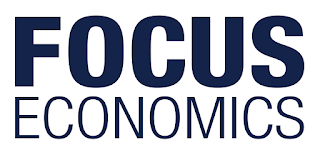Comprehensive data confirmed that the Eurozone economy lost steam in Q1, growing at the weakest pace since Q2 2016. The external sector was primarily behind the slowdown, with a strong euro and slowing global recovery fueling a decline in overseas sales. Data for Q2 suggests that momentum has regained some lost ground, although growth is likely still below last year’s highs. The unemployment rate hit a new multi-year low in April, and strong services sector growth pushed the composite PMI up in June. That said, data for the manufacturing sector has been weak, with industrial production contracting in May and the manufacturing PMI falling to an 18-month low the month after. Moreover, the outlook for the sector has turned gloomier in recent weeks. On 22 June, U.S. President Donald Trump threatened to slap a 20% tariff on all European Union manufactured automobiles if retaliatory tariffs on U.S. goods enacted by the EU were not lifted. While the U.S.’s initial tariffs on steel and aluminum are expected to have a relatively small economic effect, the automobile industry is a much larger sector and tariffs could dampen manufacturing activity. FocusEconomics panelists cut 0.1 percentage points off the Eurozone’s growth forecast for 2018 this month and now see GDP growing 2.2% in 2018. A weak first quarter and rising political risks are dampening the outlook, although growth is expected to remain healthy overall thanks to a solid domestic economy. In 2019, the economy is seen expanding 1.9%. Harmonized inflation jumped from 1.3% in April to 1.9% in May amid higher energy costs. As a result, inflation is around the ECB’s target of close to 2.0%. Our panel sees inflation averaging 1.6% in both 2018 and 2019.
Amid a healthy recovery and rising price pressures, the ECB announced it was winding down its massive bond buying program on 14 June, with purchases set to end completely after December. However, the Bank still struck an accommodative tone, stating that it plans to hold the refinancing rate at a record-low 0.00% until the end of next summer. The next meeting is set for 26 July. The Consensus Forecast is that the refinancing rate will end 2018 at 0.00% and 2019 at 0.30%.
The euro continued to flounder against the U.S. dollar in June, remaining at some of the lowest values seen in 2018. On 22 June, the euro bought 1.16 USD, weakening 1.2% from the same day last month. Our panel sees the currency ending 2018 at 1.21 USD per EUR and 2019 at 1.26 USD per EUR.
Amid a healthy recovery and rising price pressures, the ECB announced it was winding down its massive bond buying program on 14 June, with purchases set to end completely after December. However, the Bank still struck an accommodative tone, stating that it plans to hold the refinancing rate at a record-low 0.00% until the end of next summer. The next meeting is set for 26 July. The Consensus Forecast is that the refinancing rate will end 2018 at 0.00% and 2019 at 0.30%.
The euro continued to flounder against the U.S. dollar in June, remaining at some of the lowest values seen in 2018. On 22 June, the euro bought 1.16 USD, weakening 1.2% from the same day last month. Our panel sees the currency ending 2018 at 1.21 USD per EUR and 2019 at 1.26 USD per EUR.





